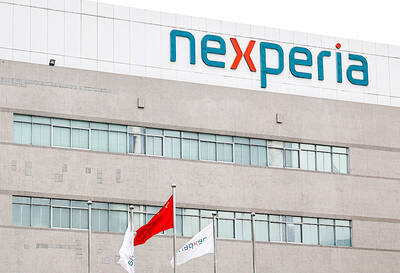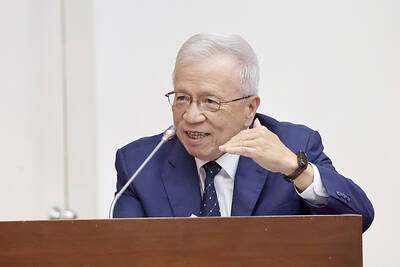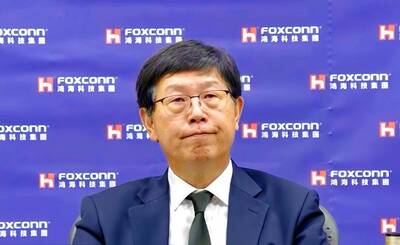Bendable mobile phones, quick-charge batteries and unbreakable touch screens — technology firms are racing to harness the potential of graphene, a wonder material that scientists say could transform consumer electronics.
A fine sheet of pure carbon, graphene is as thin as an atom, making it the skinniest material known.
At the same time though, it is 100 times stronger than steel, hugely pliable and can conduct electricity and heat better than anything else.
“There are other materials which do have one of those properties each,” said physicist Kostya Novoselov — who first isolated graphene in 2004 — last week at the Mobile World Congress, the sector’s biggest trade fair, in Barcelona.
“What is amazing here is that all those qualities are combined in one simple crystal,” he said. “Of course that immediately leaves us with a number of possible applications.”
Novoselov, a Russian-born British citizen, and his colleague at Manchester University, Andre Geim, won the Nobel Prize for their work with graphene, sparking a flurry of interest in the new material.
The number of patents involving graphene soared from less than 50 in 2004 to about 9,000 in 2014, according to Andrew Garland of research firm Future Markets, who puts out a twice-yearly report on the material.
“Most [of the patents] are in electronics,” he said.
Samsung Electronics Co, the world’s No. 1 smartphone maker, has taken out the most graphene patents — more than 490 — followed by China’s Ocean’s King Lighting Science & Technology Co (海洋王照明) and IBM Corp.
While its real-world uses so far remain modest, research into possible applications for the material picked up steam in Europe after the EU set aside 1 billion euros (US$1.1 billion at current exchange rates) in 2013 to be spent over 10 years to investigate.
“We believe we require another 10 years to get to the point where a lot of devices will start being on the market,” said Andrea Ferrari, director of the Cambridge Graphene Center at the University of Cambridge in England.
The trade fair in Barcelona for the first time had a pavilion dedicated to graphene research centers and start-ups, a sign of the growing importance of the material.
Graphene is so pliable scientists predict it will one day make flexible phones possible.
British firm FlexEnable Ltd showcased a smartwatch prototype made using graphene that wraps around a user’s wrist, while British tech firm Zap&Go Corp displayed a graphene charger for mobile phones and tablets that takes just five minutes to fully load with power.
Graphene is so strong and thin that researchers believe they will one day be able to use it to make unbreakable screens for mobile devices.
“With just a few kilos you can replace all the touchscreens in the word. With just a few layers on top of each other you can support an elephant,” the Italian Institute of Technology’s Graphene Labs director Vittorio Pellegrini said. “Graphene is really a material that allows our imagination to fly. There is no limit to what you can do.”

JITTERS: Nexperia has a 20 percent market share for chips powering simpler features such as window controls, and changing supply chains could take years European carmakers are looking into ways to scratch components made with parts from China, spooked by deepening geopolitical spats playing out through chipmaker Nexperia BV and Beijing’s export controls on rare earths. To protect operations from trade ructions, several automakers are pushing major suppliers to find permanent alternatives to Chinese semiconductors, people familiar with the matter said. The industry is considering broader changes to its supply chain to adapt to shifting geopolitics, Europe’s main suppliers lobby CLEPA head Matthias Zink said. “We had some indications already — questions like: ‘How can you supply me without this dependency on China?’” Zink, who also

At least US$50 million for the freedom of an Emirati sheikh: That is the king’s ransom paid two weeks ago to militants linked to al-Qaeda who are pushing to topple the Malian government and impose Islamic law. Alongside a crippling fuel blockade, the Group for the Support of Islam and Muslims (JNIM) has made kidnapping wealthy foreigners for a ransom a pillar of its strategy of “economic jihad.” Its goal: Oust the junta, which has struggled to contain Mali’s decade-long insurgency since taking power following back-to-back coups in 2020 and 2021, by scaring away investors and paralyzing the west African country’s economy.

BUST FEARS: While a KMT legislator asked if an AI bubble could affect Taiwan, the DGBAS minister said the sector appears on track to continue growing The local property market has cooled down moderately following a series of credit control measures designed to contain speculation, the central bank said yesterday, while remaining tight-lipped about potential rule relaxations. Lawmakers in a meeting of the legislature’s Finance Committee voiced concerns to central bank officials that the credit control measures have adversely affected the government’s tax income and small and medium-sized property developers, with limited positive effects. Housing prices have been climbing since 2016, even when the central bank imposed its first set of control measures in 2020, Chinese Nationalist Party (KMT) Legislator Lo Ting-wei (羅廷瑋) said. “Since the second half of

AI BOOST: Next year, the cloud and networking product business is expected to remain a key revenue pillar for the company, Hon Hai chairman Young Liu said Manufacturing giant Hon Hai Precision Industry Co (鴻海精密) yesterday posted its best third-quarter profit in the company’s history, backed by strong demand for artificial intelligence (AI) servers. Net profit expanded 17 percent annually to NT$57.67 billion (US$1.86 billion) from NT$44.36 billion, the company said. On a quarterly basis, net profit soared 30 percent from NT$44.36 billion, it said. Hon Hai, which is Apple Inc’s primary iPhone assembler and makes servers powered by Nvidia Corp’s AI accelerators, said earnings per share expanded to NT$4.15 from NT$3.55 a year earlier and NT$3.19 in the second quarter. Gross margin improved to 6.35 percent,